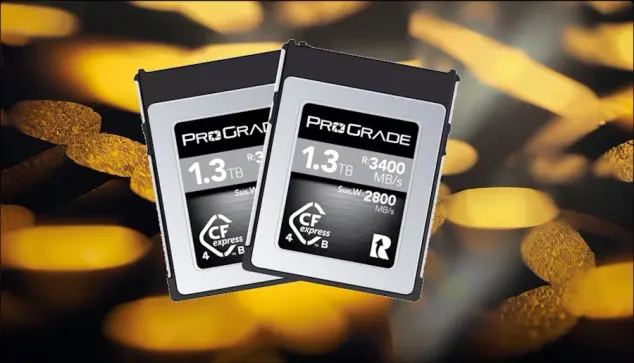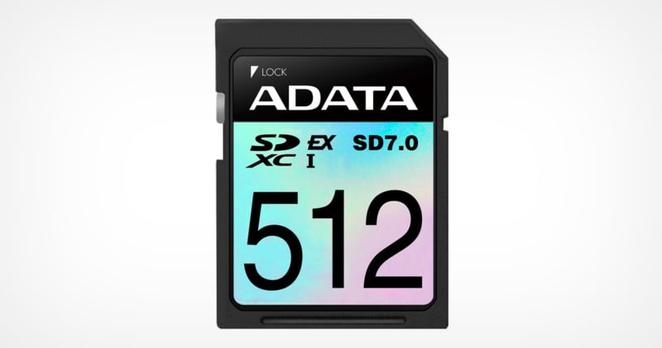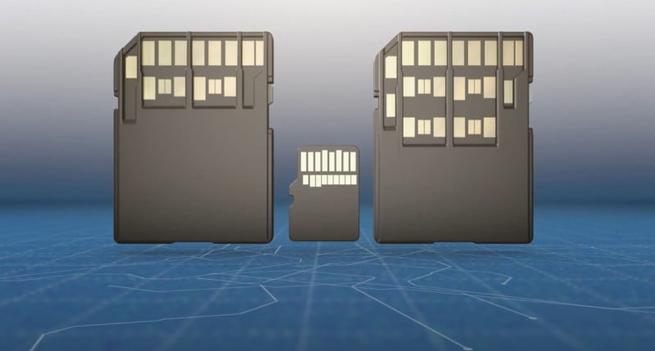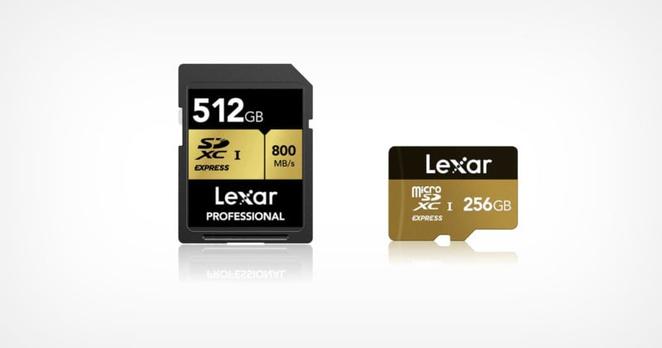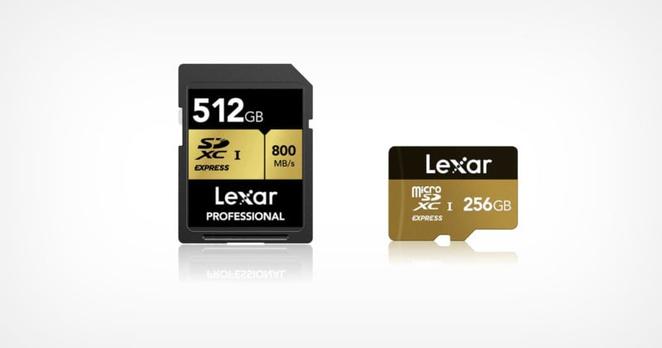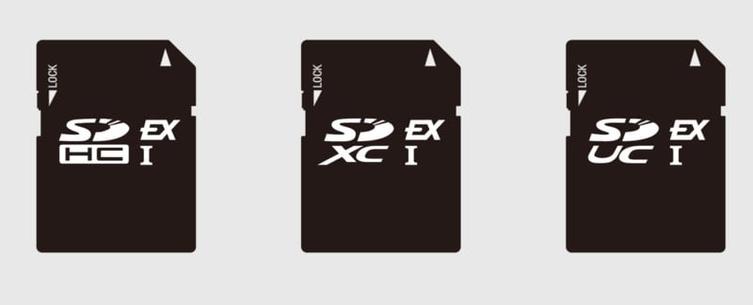ProGrade Digital Expands SSD Options With Two New Compact Offerings https://petapixel.com/2025/04/03/prograde-digital-expands-ssd-options-with-two-new-compact-offerings/ #progradedigital #progradepg10.5 #progradepgm12 #progradepg30 #Equipment #proreslog #iphone16 #prograde #storage #Mobile #iphone #News #ssd
#prograde
Your occasional #reminder, brought on by the #xmas #shopping season...
Remember: Anything labelled "Pro" or "Professional", isn't.
Professionals know whether a #tool, part, #adhesive, #lubricant, or other supply is professional-grade or not; they don't need to be told.
#Pro #Professional #ProfessionalGrade #ProGrade #advertising #marketing #wank
ProGrade PG10 SSD Review: The Best Sustained Performance, Period https://petapixel.com/2024/09/27/prograde-pg10-ssd-review-usb4-drive-delivers-fantastic-sustained-performance/ #progradedigitalpg10 #portablessdreview #progradedigital #progradepg10 #portablessd #Equipment #ssdreview #prograde #Reviews #storage #review #usb4 #ssd
ProGrade Digital’s New USB4 PG10 SSD Is Built for Pro Workflows https://petapixel.com/2024/09/27/prograde-digitals-new-usb4-pg10-ssd-is-built-for-pro-workflows/ #progradedigital #thunderbolt4 #portablessd #Equipment #prograde #storage #usb4ssd #News #ssd
Lexar’s Impressive-Sounding 1,700 MB/s SD 8.0 Card Isn’t Compatible With Anything https://petapixel.com/2024/09/13/lexars-impressive-sounding-1700-mb-s-sd-8-0-card-isnt-compatible-with-anything/ #progradedigital #cfexpresstypea #cfexpresstypeb #cfassociation #sdassociation #memorycards #memorycard #sd8express #Editorial #Equipment #cfexpress #sdexpress #Features #industry #prograde #sdcards #sdcard #lexar #sd8 #sd
ProGrade’s New 120GB CFexpress 2.0 Type A Card Is Its Cheapest Offering https://petapixel.com/2024/08/27/progrades-new-120gb-cfexpress-2-0-type-a-card-is-its-cheapest-offering/ #progradedigital #cfexpresstypea #memorycard #Equipment #cfexpress #prograde #News #Sony
ProGrade’s New VPG 200 CFexpress Type A Cards Are Affordable, Spacious https://petapixel.com/2024/01/19/progrades-new-vpg-200-cfexpress-type-a-cards-are-affordable-spacious/ #progradedigitalgoldseries #cfexpresstypea #Equipment #cfexpress #prograde #vpg200 #News #cfa
ProGrade Digital lancia la prima scheda di memoria CFexpress 4.0 Type B
Prime schede di memoria al mondo del tipo CFexpress4
👉 https://gomoot.com/prograde-digital-lancia-la-prima-scheda-di-memoria-cfexpress-4-0-type-b/
@ProGrade #ProGrade #CFexpress4 #CFexpress #cf #compactflash #memorycards #nikon #canon #panasonic
ProGrade Digital製のUHS-II対応256GB SDXCカード「PGSD256GBKJP」で「メモリーカードへの書き込みが正常に終了しませんでした」と言う表示が発生中 #ProGrade #ProGradeDigital
ProGrade製のUHS-II対応のSDXC 256GBカード「PGSD256GBKJP」が25%引き特価9,800円、送料無料で販売中 #ProGrade #プログレードデジタル #SDXC #メモリーカード
New SD Express Memory Card Costs $300, Is Slower Than ‘Old’ SD Cards
Ritz Gear is currently offering a brand new SD Express memory card that it promises boasts up to 820 MB/s read and 500 MB/s write speeds for $300. In real-world use cases, it will never come close to these promises and it says so right on the box.
I have been beating this drum now for two years, but it looks as though I need to do it again as more than 1,200 people have reviewed this card on Amazon and graced it with a 4.5-star total score. Unfortunately, this is likely filled with users who have no idea what they have bought and did not ever check to make sure they were getting what they paid for.
Because if they had, they would realize they most certainly did not.
Why SD Express is Not Worth the Money
The SD Association, and those who signed on to the specification, would love consumers to believe that it is the future format that is poised to compete with CFexpress and its many configurations. The main talking point of SD Express is that it is backward compatible with current devices that use an SD card slot.
This is technically true. But only technically.
While yes, this $300 card will fit into a current SD slot on a computer, card reader, or camera and work, it will only work to the UHS-I specification (which caps out at 104 MB/s transfer speeds, mind you) and will come nowhere near the promised speeds emblazoned on the front of the box. As Wes Brewer, the CEO of ProGrade Digital explained back in 2019, this specification is deeply flawed.
“They came out and made a design that was compatible form-factor wise with the SD card, but it only supports one lane of PCIe. So it’s a bit inhibited for the maximum potential that PCIe brings to the industry,” Brewer says. “They really just bolted a single lane of PCIe onto the form factor of an SD card.”
What is most important about this is the misleading nature of the "backwards compatible" claim that allows Ritz Gear to market this card to existing SD card users.
“It is only backward compatible to UHS-I in terms of the SD standard.. You can put it in there, and it’ll work, but it’ll only work as a UHS-I card,” Brewer clarifies.
That means that this Ritz Gear $300 "next generation" memory card will only ever work as well as this $57 standard SD card from SanDisk in any device with a standard SD card slot. Anyone who buys this card is paying more than five times as much for the exact same performance.
I've already explained the pitfalls with the SD Express specification in detail before, so I urge you to read that coverage in order to gain a complete understanding of why SD Express cards are barely worth the plastic they are constructed from.
This Card Takes Advantage of Those Who Don't Know Better
I find it extremely unlikely that Ritz Gear doesn't know that this card can't do what it promises. The language used in the product description claims incredible performance numbers, such as "up to 3x faster than even the quickest UHS-II SD cards," without disclosing how to get those numbers and how basically no one who buys it will ever come close to seeing anything near those numbers.
To be clear: the only way anyone would ever see these speed numbers is if they owned an SD Express card reader, plugged it in to a compatible computer, and transferred data to or from it that way. This is not where users need speed. When it comes to working in a camera, this card cannot do what it promises in any case, as -- and I cannot shout this loud enough -- no camera on the market supports the SD Express specification.
What's even more baffling is that, on the box, Ritz basically admits that this card cannot hit the promises it claims. Even if someone, somehow was able to tap into the maximum potential of this card (which I want to reiterate is not currently possible with any camera on the market without exception), the actual performance rating this SD Express card has is pitiful.
All SD cards come with a set of letters and numbers that most average consumers probably don't understand, but do reveal a lot about a card. This Ritz Gear SD Express card is rated as an SDXC, EX I, V30, U3, A1. Let's break that down.
- SDXC: This stands for "Secure Digital eXtended Capacity," which just means that the card format can be up to 2 TB and is only required to hit a maximum speed of 104 MB/s.
- EX I: This is a first-generation (I), SD Express (EX) memory card.
- V30: This is where it gets interesting. The V30 specification means this card can only sustain a maximum of 30MB/s, which isn't particularly fast. So while Ritz Gear claims some very high peak speeds, the card can only actually sustain 30 MB/s, which is only enough for low bitrate 4K video and is currently found on UHS-I and UHS-II cards, the specification that Ritz claims it is multiple times faster than.
- U3: This is basically a repetition of the V30 note, and quantifies the same sustained data rate but is not specific for video.
- A1: This is the "Application Performance Class" which denotes a card's minimum random read and write speeds as well as its minimum sustained sequential write speed. This was added to support devices like phones and tablets where data is recorded at random intervals instead of how like a camera records data, which is sequentially. Since no phone or tablet accepts SD Express, it's a meaningless label, in this case.
I want to focus on the V30 specification of this card for a moment, because it is easily the most hilarious part of this whole situation and really points a light on how much of a scam this card is. UHS-II SD cards, which can easily be found for less than what Ritz Gear is asking here, can currently be purchased with a V90 specification which guarantees a minimum sustained write speed of at least 90 MB/s and therefore can support multiple 4K framerates and some 8K framerates. Mind you, UHS-II cards have a maximum data transfer rate of 312 MB/s, which is not even half of what Ritz Gear is promising its card can do (remember, Ritz Gear claims up to three times faster performance than UHS-II).
Peak speeds, like what Ritz Gear has on its label, are not the same as sustained speeds, which actually matter when it comes to recording information.
So notwithstanding the egregiously misleading nature of SD Express, Ritz Gear admits on its own packaging that the real-world usability of its claims are false. The packaging and marketing of this memory card is specifically designed to mislead, lie, and take advantage of people who just don't know better. Unfortunately, it appears to be working.
Do Not Buy SD Express Cards
There are a great many people who continue to hold out hope that SD Express will provide some kind of beautiful future where the speed and potential of CFexpress will be unlocked for those who own older equipment. This is a future that will never exist, because the components are simply not compatible.
There is a reason not a single camera manufacturer has signed on to the SD Express specification: it's just not worth it. SD Express is doomed to always be slower than CFexpress as the core upon which it is built is flawed, as Brewer has explained in the past.
If you want the speeds that this Ritz Gear memory card falsely claims it can provide, ProGrade Digital makes a card that is less expensive and will perform faster and better in all modern cameras and computers. If you need the kind of speed that Ritz Gear promises, which few actually do, get one of those.
#editorial #equipment #opinion #cfexpress #memorycards #performance #prograde #progradedigital #ritzgear #sandisk #sd #sdexpress #speed
Adata Launches SD Express Cards, A Format No Camera Supports
Adata has announced that it will be producing a line of SD Express memory cards, following Lexar which did the same earlier this year. It's unclear who these cards are for, however, as no manufacturer currently supports the spec.
Adata is a Taiwanese memory and storage manufacturer that has been operating since 2001, but it hasn't done much -- if anything -- in the memory card space in that time. The company has thus far focused on solid-state drives for personal computers as well as external storage solutions but appears to be ready to break into memory cards with the launch of its SD Express line.
PCWorld reports that the company will release what it is calling Premier Extreme SDXC SD 7.0 express cards that will use PCIe Gen 3 and promises read and write speeds of 800 MB/s and 700 MB/s respectively. The company also points out that these speeds are about 1.5 times faster than a standard SATA SSD, but up to eight times faster than a standard SD card.
SD Express is the SD Association's answer to CF Express, a card format that has three types and is already in use across the camera industry from stills photo cameras to video-focused cameras. Manufacturers were quick to sign on to the standard several years ago and notably Canon, Nikon, and Sony all signed on and currently support the standard across a range of devices. Sony, in particular, has been a strong supporter of the Type A standard, which is capable of half the read and write speeds of the larger Type B standard but is also much smaller -- A CFexpress Type A card is smaller than a typical SD card while a CFexpress Type B card is slightly larger than an SD card.
A common misconception is that SD Express is fully compatible with current devices that take SD cards. While the cards are technically backwards compatible, that statement is misleading since SD Express uses a different bus than current SD cards. SD Express uses the PCIe bus while current SD cards use the UHS bus. When an SD Express card is placed into a current-generation device's SD port, it can take advantage of a single lane of UHS but as a result will max out at UHS-I speeds, which caps at about 104 MB/s.
SD Association
Because of this glaring limitation, it's unclear why Adata or Lexar are building on the SD Express specification as PetaPixel sources confirm that to date, no manufacturer has signed on to produce any hardware that fully supports the format, meaning the best anyone can expect to get out of what will be more expensive cards is current UHS-I speeds. Additionally, there are no card readers on the market that can take advantage of the top speeds promised for SD Express, either. There is literally no hardware anywhere that supports these cards.
The main argument that most make against CFexpress is that it requires the purchase of both new cards and new readers, but SD express has those same limitations. Additionally, SD Express has theoretical speed caps that are well below the CFexpress theoretical limits. Current Type B cards typically reach read speeds of 1,700 MB/s and surpass 1,400 MB/s write speeds thanks to their two lanes of PCIe. Type A cards are slower due to their single-lane design, but still promise 800 MB/s read speeds and 700 MB/s write speeds which matches what SD Express is touting. The difference here is that CFexpress is actually supported and cameras and readers currently exist that use it.
What's more, CFexpress is likely to continue to grow in popularity as ProGrade Digital's recent choice to start manufacturing the cards shows it believes the format to be popular enough to warrant production costs.
Just as was the case with Lexar's SD Express announcement, Adata has not provided any information on when the cards will actually be available to purchase or how much they will cost. None of that really matters anyway, though, since no one can use the cards to begin with.
#equipment #news #adata #cfassociation #cfexpress #cfexpresstypea #cfexpresstypeb #lexar #memorycards #prograde #progradedigital #sdassociation #sdcards #sdexpress
ProGrade Versus Sony CFexpress Type A Cards: Is There a Difference?
ProGrade Digital just released the first CFexpress Type A cards that aren't made by Sony and while they aren't "cheap" by any stretch of the imagination, they are more affordable than Sony's offering. But does that discount come at a performance cost?
At the time of publication, CFexpress Type-A memory cards were only used by Sony in a few of its newer cameras like the Alpha 1. The format is much smaller than a CFexpress Type B card and while Type A cards will never be as fast, Sony chose them for its line of cameras because they have a secondary benefit: the small size lets them share a card slot that can also be used with legacy SD cards.
SD cards are actually bigger than CFexpress cards, which let Sony build a slot in both its cameras and its CFexpress card reader that lets the one slot pull double duty. For photographers, this means that Sony could support faster read and write speeds to get the most out of its new cameras while also not forcing photographers to pick up all-new media.
That choice is great because Sony's CFexpress Type A cards are -- at the time of publication -- $400 for 160GB of capacity, a considerable investment.
As you can see above, ProGrade elected to keep its two memory card reader slots separate.
While the format isn't widespread yet, ProGrade Digital believes it will become more popular in the future and as such has decided to join the party and just released its version of the media.
What's the Difference?
Performance-wise, both Sony and ProGrade promise the same read and write speeds and physically both devices look almost identical -- in fact, both cards note the country of origin as the same as well: Taiwan. The only real differences between them appear to be minor design choices on the back of the cards and a $70 price margin.
The only real way to repeatedly test and determine if there is a difference between these two cards is to run them each through speed tests. Theoretically, I could fire a burst of photos on camera with each card and time how long it takes to clear the buffer, but there is no reason to believe that the speed tests here would provide a different result especially since -- as I'll explain below -- I used two different card readers. Additionally, this method is much more repeatable and controlled.
For this test, I have both the Sony and ProGrade CFexpress cards as well as the official card readers from both companies: the Sony MRW-G2 and the ProGrade Digital CFexpress Type A and SD Reader. I ran both cards through both of the readers in order to both see if there was any benefit to using a card reader and card from the same manufacturer, but also to assure that there was no unfair advantage that would appear by using a Sony card on a Sony reader, for example. I did not think one would exist, but it's safer to be sure.
I ran speed tests using the BlackMagic Speed Test application on an Apple MacBook Pro multiple times. Both card readers were connected via USB-C cables into the reader and into the laptop -- I did not use the cable that converts the USB-C design to USB-A. Testing speeds on cards varies with each run that the card goes through and performance will vary slightly depending on individual cards and over time, but the screenshots below are good overall averages of what you can expect from the cards.
Sony Versus ProGrade via ProGrade Card Reader
First I want to show the results from running both cards through the ProGrade Digital combination CFexpress Type A and SD card reader:
ProGrade Digital CFexpress Type A Card Sony CFexpress Type A Card
As you can see, both cards fell short of the promised "up to" 800 MB/s read spends and 700 MB/s write speeds. The ProGrade Digital card averaged around 679 MB/s write speeds and around 785 MB/s read speeds with the ProGrade reader. The Sony card performed pretty similarly, averaging around 683 MB/s write speeds and around 780 MB/s read speeds through the ProGrade reader.
While it appears the ProGrade Digital card read data a bit faster than the Sony and the Sony wrote data a bit faster than the ProGrade, the difference here is within a tolerable margin of error of around 5 MB/s, which means that there is effectively no difference in performance between these cards with the ProGrade reader.
Sony Versus ProGrade via Sony Card Reader
Next, I ran both cards through the Sony combination CFexpress and SD card reader:
ProGrade CFexpress Type A Card Sony CFexpress Type A Card
The Prograde CFexpress card averaged around 654 MB/s write speeds and 730 MB/s read speeds when tested through the Sony reader. The Sony card averaged around 651 MB/s write speeds and 731 MB/s read speeds through the Sony reader. The results here are much closer than when the cards were compared through the ProGrade card reader and are absolutely within the expected margin of error.
As far as I am concerned, this confirms that the cards should effectively perform identically across mediums and cameras.
Curiously, both the ProGrade card and the Sony card performed worse through Sony's reader than through ProGrade's reader by a factor of nearly 20 MB/s in both read and write, which is more than I feel comfortable attributing to just a margin of error. I am not familiar with the inner workings of card readers and what might make one perform better than the other, but in my testing, ProGrade does take the win here as far as media readers.
Hunt the Best Price, Not the Brand
If you were afraid that the $70 discount in price between the Sony and the ProGrade cards would result in worse performance for ProGrade, I have good news: both cards should perform pretty much exactly the same.
One thing worth noting though is that as far as card readers go, ProGrade Digital's CFexpress Type A and SD card combo reader appears to be a bit better than the Sony MRW-G2 CFexpress Type A reader. Sony's reader is also $120, while ProGrade's is $80. So while I can comfortably recommend you can buy either the Sony or ProGrade card (whichever is on sale) and get the same performance, it appears the ProGrade card reader will give you better performance, albeit just a little.
That said, ProGrade's reader is made of mostly plastic while Sony's is an all-metal housing. I haven't ever encountered a situation where I needed my card reader to be tough as nails, but if that's important to you, Sony is likely the better choice even if it's just a hair slower.
#comparisons #equipment #reviews #alpha1 #cardreader #cfexpress #cfexpresstypea #comparison #memorycard #memorycards #prograde #progradedigital #review #sdcard #sony #storage
Lexar Developing SD Express Memory Cards, But It’s Unclear Who For
Lexar has announced that it is actively developing on the thus far unused SD Express specification to create SD memory cards that use PCI Express (PCIe 4.0) and will more than triple the speeds of current UHS-II cards, but it's not clear who these cards will work for.
Lexar says that it is actively developing both regular SD Express as well as microSD Express memory cards. Its SD Express cards will have a capacity of up to 512 gigabytes while its microSD Express will cap out at 256 gigabytes.
Lexar SD Express and microSD Express memory cards will feature write speeds of up to 410MB/s and read speeds of up to 824MB/s, respectfully. Lexar is currently working with manufacturers of relevant host devices as part of its early development.
The SD Express specification is not new but was developed by the SD association several years ago in response to the Compact Flash organization's CFexpress specification. The idea would allow for the format to theoretically reach greater capacities and much faster speeds all while maintaining the same current SD card format with the promise of backward compatibility.
While this sounds great, the SD Express specification has not been actively developed for a reason -- it's not perfect. In 2019, PetaPixel spoke with ProGrade Digital's Wes Brewer who explained that there were many hidden drawbacks with the SD Express specification. For starters, SD Express cards would technically be backwards compatible, but only to UHS-I speeds.
“You can put it in there, and it’ll work, but it’ll only work as a UHS-I card," Brewer said. "So if the camera requires full SD UHS-II performance, it won’t work right. It won’t work as well as it’s supposed to like an SD UHS-II card would work.”
At the time, Brewer noted that no camera manufacturer was interested in the SD Express format and none were making any cameras that would work with it. To date, that has not changed and it's unclear who Lexar's cards would be for.
The SD Association's SDx specification allows for HC, XC and UC (high capacity, extended capacity, and ultra capacity) cards.
What's more, those looking to keep the SD form factor have already found a solution: CFexpress type A. Sony's latest cameras accept both standard UHS-II SD cards and CFexpress Type A cards in the same card slot. Back in 2019, Brewer predicted this.
In 2020, the specification was updated and allowed for transfer speeds for up to 3,983 megabytes per second, a huge leap in performance. It wasn't clear though if the backward compatibility issue had been solved nor if any camera or device manufacturer was even interested in supporting cards made with the specification.
Even if all the issues with SD Express were solved by the new specification and camera makers decide to support them, SD Express is a long way from challenging CFexpress. The read and write speeds promised on Lexar's coming SD Express cards may be up to three times better than UHS-II SD cards, but they are still well below current CFexpress speeds. Current Type B cards typically reach read speeds of 1,700 MB/s and surpass 1,400 MB/s write speeds thanks to their two lanes of PCIe. Type A cards are slower due to their single-lane design, but still promise 800 MB/s read speeds and 700 MB/s write speeds. While SD Express appears to be competitive on read speeds, Lexar's SD Express cards will only reach about half the write speed performance.
Lexar appears undeterred, however. The company plans to launch its new line of SD Express cards in 2022, but it is not clear what devices will support them or how much they will cost. That last note will be the most important, as SD Express may only be able to compete by undercutting the currently astronomical price of CFexpress.
#equipment #news #cfassociation #cfexpress #cfexpresstypea #cfexpresstypeb #lexar #memorycards #prograde #progradedigital #sdassociation #sdcards #sdexpress
